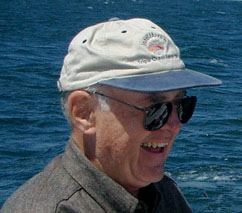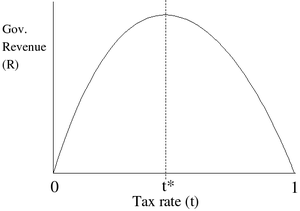Forbes.com
Rich Karlgaard, 04.19.05, 10:00 AM ET
 |
| Gordon Moore on a fishing trip (Photo credit: Wikipedia) |
•
Moore's Law. … This April marked the 40th anniversary of
Gordon Moore's famous dictum. In 1965 Moore (he co-founded
Intel three years later) noted that components on silicon chips were doubling every year. In 1975 he amended that to every two years. Today Moore's Law has transcended silicon chips. It has become a way of saying that all digital stuff, from PCs to cell phones to music players, get twice as good every 18 to 24 months--at the same price point. …
•
The Back Side of Moore's Law. This one says that digital stuff gets 30% to 40% cheaper every year--at the same performance point. The back side of Moore's Law is why your $299 Treo 650 is as powerful as a $3,500 Compaq PC was in 1988. …
 |
| Moore's Law as applied to Intel processors, from the 4004 to the Pentium. (Photo credit: Wikipedia) |
•
Andy and Bill's Law. The origin of this was a funny one-liner told at computer conferences in the 1990s. It went like this: "What Andy giveth, Bill taketh away." It meant that every time
Andy Grove--then chief executive of Intel
(nasdaq:
INTC -
news -
people )--brought a new chip to market,
Bill Gates--then CEO of
Microsoft (nasdaq:
MSFT -
news -
people )--would upgrade his software and soak up the new chip's power. … Moore's Law constantly enables new software. Often the new software is just an incremental improvement. But every few years the world gets a wild breakthrough--graphic computing in the 1980s, Web browsers in the 1990s, fast search engines today. …
•
Metcalfe's Law. This one's named after
Robert Metcalfe, the inventor of the computer networking protocol Ethernet. Metcalfe said the usefulness of a network improves by the square of the number of nodes on the network. Translation: The Internet, like telephones, grows more valuable as more join in. …
•
Gilder's Law: Winner's Waste. The futurist
George Gilder wrote about this a few years ago in a Forbes publication. The best business models, he said, waste the era's cheapest resources in order to conserve the era's most expensive resources. When steam became cheaper than horses, the smartest businesses used steam and spared horses. Today the cheapest resources are computer power and bandwidth. Both are getting cheaper by the year (at the pace of Moore's Law). Google
(nasdaq:
GOOG -
news -
people ) is a successful business because it wastes computer power--it has some 120,000 servers powering its search engine--while it conserves its dearest resource, people. Google has fewer than 3,500 employees, yet it generates $5 billion in (current run rate) sales.
 |
| David Ricardo Français : David Ricardo Deutsch: David Ricardo (Photo credit: Wikipedia) |
•
Ricardo's Law. The more transparent an economy becomes, the more
David Ricardo's 19th-century law of comparative advantage rules the day. … Which means if your firm's price-value proposition is lousy, too bad. The world knows.
•
Wriston's Law. This is named after the late
Walter Wriston, a giant of banking and finance. In his 1992 book,
The Twilight of Sovereignty, Wriston predicted the rise of electronic networks and their chief effect. He said capital (meaning both money and ideas), when freed to travel at the speed of light, "will go where it is wanted, stay where it is well-treated...." By applying Wriston's Law of capital and talent flow, you can predict the fortunes of countries and companies.
•
The Laffer Curve. In the 1970s the young economist
Arthur Laffer proposed a wild idea. Cut taxes at the margin, on income and capital, and you'll get more tax revenue, not less. Laffer reasoned that lower taxes would beckon risk capital out of hiding. Businesses and people would become more productive. The pie would grow. Application of the Laffer Curve is why the United States boomed in the 1980s and 1990s, why India is rocking now and why eastern Europe will outperform western Europe.
•
Drucker's Law. Odd as it seems, you will achieve the greatest results in business and career if you drop the word "achievement" from your vocabulary. Replace it with "contribution," says the great management guru
Peter Drucker. Contribution puts the focus where it should be--on your customers, employees and shareholders.
•
Ogilvy's Law. David Ogilvy gets my vote as the greatest advertising mind of the 20th century. The founder of
Ogilvy & Mather--now part of
WPP (nasdaq:
WPPGY -
news -
people )--left a rich legacy of ideas in his books, my favorite being
Ogilvy on Advertising. Ogilvy wrote that whenever someone was appointed to head an office of O&M, he would give the manager a Russian nesting doll. These dolls open in the middle to reveal a smaller doll, which opens in the middle to reveal a yet smaller doll...and so on. Inside the smallest doll would be a note from Ogilvy. It read: "If each of us hires people who are smaller than we are, we shall become a company of dwarfs. But if each of us hires people who are bigger than we are, we shall become a company of giants." Ogilvy knew in the 1950s that people make or break businesses. It was true then; it's truer today.













No comments:
Post a Comment